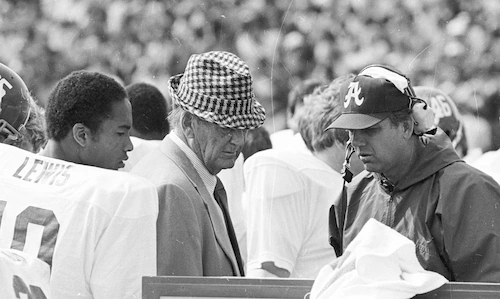The Greatest Offensive Coordinator in Alabama Football History
Alabama has a new offensive coordinator, Kalen DeBoer, who has rehired Ryan Grubb. Grubb previously worked at Alabama but left for the NFL’s Seattle Seahawks. He has a strong resume, having achieved great success with offenses led by quarterbacks like Michael Penix at Washington and Jake Haener at Fresno State.
Grubb will now try to get the most out of an Alabama offense that quite often underachieved in 2024 with Jalen Milroe at quarterback. Milroe is gone to the NFL, though there are some excellent offensive weapons remaining in receivers Ryan Williams and Germie Bernard and running back Jam Miller. Junior Ty Simpson is the presumptive starter at quarterback in 2025, though sophomore Austin Mack and perhaps even 5-star freshman Keelon Russell might have something to say about that.
The expectation is that Alabama’s offense under Grubb will become one of the best in the country, as Washington’s was when he was on-staff there. And if so, he would quickly become a beloved figure around Tuscaloosa.
But who is the greatest offensive coordinator in Alabama football history? Here are some top contenders:
Mal Moore (1971-82, 1990-93)
Moore was a quarterbacks coach and primary playcaller under coach Paul “Bear” Bryant. He helped lead Alabama to numerous SEC championships and was part of 10 national championships. Moore is the only person on this list who was an Alabama graduate, having served as a backup quarterback for the Crimson Tide under coach Paul “Bear” Bryant in the early 1960s.
After one year at Montana State, he returned to his alma mater as a graduate assistant in 1964. Moore was a defensive backs coach from 1965-70 before moving to offense as quarterbacks coach, just as Alabama was installing the wishbone offense in 1971. He stayed on the staff until Bryant’s retirement after the 1982 season, directing Crimson Tide offenses that led the SEC in scoring eight times in 10 years from 1971-80.
Homer Smith (1988-89, 1994-95)
Smith was widely regarded as one of the top offensive minds in college football. He had two separate stints at Alabama and helped develop quarterback Jay Barker into a Heisman Trophy finalist. Smith’s 1989 Alabama offense was one of the most-efficient in school history up to that time, leading the SEC in both total offense and scoring.
He returned to Tuscaloosa six years later following his third stint at UCLA and helped the Crimson Tide go 12-1 while developing quarterback Jay Barker into a Heisman Trophy finalist. Smith’s West Coast offense didn’t mesh well with Stallings’ more conservative approach, so he was fired after the 1995 season.
Jim McElwain (2008-11)
McElwain was part of two national championships at Alabama and helped get the most out of quarterbacks like John Parker Wilson and Greg McElroy. After running the offense at Fresno State in 2007, McElwain was brought in by second-year Alabama coach Nick Saban to help get the most out of quarterback John Parker Wilson.
He did just that, helping the Crimson Tide to an SEC West championship in 2008. Though defense carried Alabama to national titles in 2009 and 2011, McElwain’s 2009 offense featured Heisman Trophy winner Mark Ingram and the 2011 offense led the SEC in rushing at 214.5 yards per game.
Lane Kiffin (2014-16)
Kiffin is credited with modernizing Alabama’s offense, installing no-huddle, spread, and run-pass option concepts. He helped lead the Crimson Tide to three straight SEC championships and the 2015 national title. Kiffin helped both Blake Sims and Jake Coker become high-level college passers and facilitated Derrick Henry winning the 2015 Heisman.
The 2016 Alabama team quarterbacked by Jalen Hurts led the SEC in total offense and scoring. Kiffin had agreed to become head coach at Florida Atlantic prior to the 2016 College Football Playoff, and didn’t stay on for the national championship game loss to Clemson after Saban reportedly told him to move on.
Mike Locksley (2018)
Locksley was only at Alabama for one season, but that team featured one of the greatest offenses in program history. They averaged 45.6
